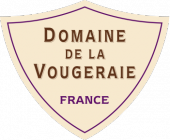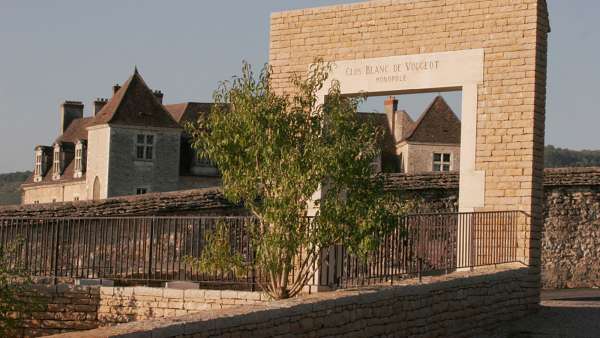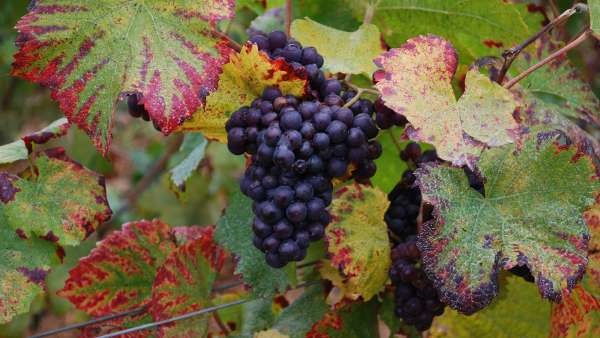Our Wines
-
Around 10 kilometers south of Beaune there is a place on the Côte where three great Burgundy white wines meet.
-
Our Beaune assembles several small parcels from the "Montée Rouge" climat, grown on both sides of a ruddy, iron-rich coomb. Known by wine growers as “The White Virgin”, the south-facing vine has the structure and power of a quality wine that is fat, rich and astounding.
-
If any town can claim to be born under the auspices of a guiding star, Beaune can. The star, seen on numerous paintings or embroideries at the Hôtel-Dieu, is the love between its two founders, Nicolas Rolin and his wife Guigone de Salins. Encircled by its ramparts and bastions like a cask by its staves, Beaune is a flamboyant gothic representation of a love story between Burgundy and Flanders, in the days of the Order of the Golden Fleece.
-
The name "Les Grèves" comes from the Latin for gravel, as the soil is highly calcareous here, ideal for the delicacy of the noblest of Beaune’s Premier Cru.
-
Our Beaune assembles several small parcels from the Montée Rouge climat, grown on both sides of a ruddy, iron-rich coomb. Known by wine growers as “The White Virgin”, the south-facing vine has both structure and power.
-
The Bienvenues Bâtard climat is tucked within that of Bâtard, a tiny patch of 3.7 hectares, and the first records of it date back at least six centuries. Our plot of 0.46 hectares is one of the biggest. Planted in 1977, the vines face the rising sun.
-
The name of Bonnes Mares remains a puzzle but it is likely that the name comes from the old French and Burgundian word "marer" (to cultivate).
-
The red clay, rare in the Côte de Nuits, gives this wine a delicate, tender heart. Its composition includes several climats from Vougeot to Morey-Saint-Denis: Les Véroilles, Les Argillères, the renowned Les Baudes climat, Les Condemennes and Les Chardannes. Its powerful, racy temperament belies Chambolle-Musigny’s reputation as a “women’s wine”.
-
Like a family reunion, this wine brings together the members of one single line of descent, and one single Cistercian terroir. The varietal – Chardonnay – originated in southern Burgundy and takes its name from the Latin word cardonnacum, which describes a place where thistles grow.
-
The “Charlemagne Grand Cru” is rarely used, but its boundaries are the same as the “En Charlemagne” climat. This climat can also produce “Corton-Charlemagne.”
-
At the foot of the Combe of Lavaux, a cool, deep coomb cuts into the hillside as if with a sickle, Gevrey-Chambertin is an enthralling overture to the Symphony of the Grands Crus. The air contains hints of all the themes played by the Pinot Noir down to Santenay, some majestic, others more subtle.
-
The Château du Clos de Vougeot is simply exceptional nothing ostentatious, but truly inspired. The chateau has been the seat of the Confrérie des Chevaliers du Tastevin since 1945, making it the best "table d'hôte" in France.
-
"Duroy had found the Corton to his liking, and let his glass be filled every time. A delicious liveliness stole over him, a warm cheerfulness, that mounted from the stomach to the head, flowed through his limbs and penetrated him throughout. He felt himself wrapped in perfect comfort of life and thought, body and soul." Guy de Maupassant, Bel Ami.
-
This climat in Beaune, the capital of Burgundy wine, lies on the upper shoulder of the slopes between Savigny-Lès-Beaune and the Montagne de Beaune. The mid-slope location is ideal, just adjacent to the Mont-Batois used by local winegrowers for research (varietal selection, growing methods), and just above Les Bressandes, one of Beaune's leading Premiers Crus.
-
Several plots from around the village of Gevrey-Chambertin are blended to make a smooth and complex Pinot Noir. The plots of Craite-Paille, Goulots, Murot, and Galands are on soil composed of silt with clay patches and just a small amount of limestone.
-
La Justice is five acres located at the bottom of the village with two distinct terroirs. The alluvial “les graviers” gives very concentrated grapes of confirmed maturity, whereas the higher part yields a lighter style wine. The stronger characteristics of La Justice make this a wine to lay down.
-
This, the Domain’s first vineyard back in 1966, is dear to our hearts. Its name derives from Les Brosselles, which meant a patch of scrubland. This climat is ideally located in the wildest, most unpretentious part of the village. The vines are on a steep east-south-east slope, with just the right degree of calcareous soil, a dream plot... .
-
This parcel located in Gevrey-Chambertin, is right at the heart of the Côte de Nuits. It nestles between two prestigious cousins Les Ruchottes du Dessus to the north and le Chambertin-Clos-de-Beze, above which it sits.
-
The ultimate wine? Pinot Noir brought to perfection? No other wine has inspired such pure emotion during its long history. Musigny brings true inspiration. In the royal family of Burgundy wines, it ranks above all the crown princes. The king? Let us say the queen… .This small sloping vineyard, just eight rows of vines, offers a powerful, select wine.
-
The citadel, founded in around 1000 A.D., derives its name from the Nuicthons, or walnut trees, which were abundant nearby. The strong ramparts protected its inhabitants, nobles, wine growers and religious communities.
-
“And lastly, to crown the repast, Ardan had brought out a fine bottle of Nuits, which was found ‘by chance’ in the provision-box. The three friends drank to the union of the earth and her satellite.” Jules Verne’s Around the Moon was the inspiration for the Apollo 15 astronauts, who christened the crater closest to their landing site Saint Georges.
-
“The velvety smoothness of good Burgundy wines, caused by the higher spirits, ensures that their taste touches the tongue softly and is gentle on the nerves”, wrote Dr Guy-Crescent Fagon in 1694. He added “A wine that the stomach can press and digest at leisure, without rushing to get rid of it”. This prescription was addressed to Louis XIV, weighed down by ill health.
-
Just like a family reunion, this wine brings together the members of a single dynasty; a terroir which will remain forever Cistercian. Their grape - Pinot Noir - was first listed in 1375. One third of the grapes are taken from our vines in the Côte de Beaune, while the remaining two-thirds are from the Côte de Nuit - the estate's "divine ratio".
-
This large, south-facing parcel covering about three acres was replanted between 1985 and 1989. The sun-drenched vineyard, ideally situated at the top of the hillside, benefits from an excellent reflection of heat onto the grapes. The Petits Noizons vines grow in a very pebbly, soil, (chalky and often alluvial), of great depth. The results are a relatively powerful wine, with good structure and high quality.
-
Like a map unfolding, the Côte de Beaune widens at Savigny. The slopes rise gently at first, then more steeply, with vines laid out on either side of a small stream, the Rhoin. On one side is Pernand-Vergelesses, on the other Beaune, under the Mont Battois. Les Marconnets is in an excellent site on the Beaune side.
-
The vineyards of Savigny-Lès-Beaune have belonged to the Dukes of Burgundy, the clergy, the Knights of Malta and the feudal lords. On the slopes rising above the village, our two plots enjoy a perfect southerly aspect, with soils rich in marl and limestone.
-
Volnay sits up high, dominating the Côte de Beaune, and on a clear day, one can see as far as Mont Blanc. And this broad scope is reflected in its wines. Volnay is a traditional Burgundy village, with a relatively low profile that focuses fully on its vines.
-
Though Vougeot is best known for the highly reputed Clos de Vougeot, covering almost 126 acres, the Premier Cru and Village appellations in the remaining 41 acres should not be forgotten. Connoisseurs yearn for this wine, from vineyards in such a fabled position.
-
Though Vougeot is best known for the highly reputed Clos de Vougeot, covering almost 126 acres, the Premier Cru and Village appellations in the remaining 41 acres should not be forgotten. Connoisseurs yearn for this wine, sitting at the night hand of its lord, and sharing most of the qualities of the Grand Cru.
-
The Clos Blanc, a mythical, mystical vineyard, is adjacent to the Château du Clos de Vougeot. This golden triangle, surrounded on all sides by great reds, first offered its pure, golden sacrament to its spiritual fathers, the first monks of Cîteaux, in 1110. Known as “The White Vineyard”, it is like a diamond set in the center of rubies.
-
Vougeot is best known for the highly reputed Clos de Vougeot, but there are a number of other outstanding climats in the remaining 40 acres of appellation d’origine contrôlée. A mere pocket handkerchief, but one of silk and lace. These climats are only known to true passionates of Burgundy wine. Take Les Cras, for example. Do you know where to find it?
































